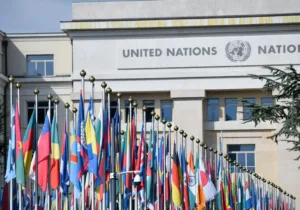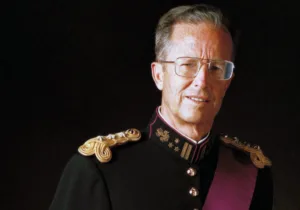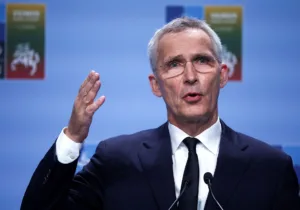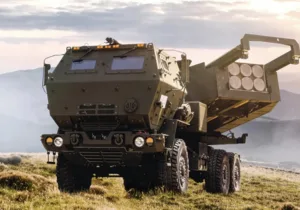Before the NATO’s leaders attended a summit in Brussels yesterday and today, they had lots of important issues on the agenda: standing up two new commands that would help keep a revisionist Russia at bay, implementing the “four 30s” initiative, bringing the Republic of North Macedonia into the fold, convincing Washington that every member is sharing the load, trying to steer Turkey back toward liberal democracy, developing ways to detect and block Moscow’s influence operations. But they would be wise to add one more item to their growing to-do list: securing the interests of the alliance in the Arctic.
Those interests—which include territorial integrity, sovereignty, resource exploration and development, trade, and freedom of navigation—are under threat because of Russia’s actions.
Russia has laid claim to half the Arctic Circle and the entire North Pole—some 463,000 square miles of Arctic sea shelf. Like Beijing in the South China Sea, Moscow has underlined its claims in a brazen military context. In 2008, for example, a Russian general revealed plans to train “troops that could be engaged in Arctic combat,” ominously adding, “wars these days are won and lost well before they are launched.”
Toward that end, the Russian military has reactivated six military bases and 13 military airfields; opened 14 new military airfields; and conducted airborne-assault exercises, amphibious landings, and large-scale war games across the Arctic. A 2015 Russian exercise in the Arctic involved 80,000 troops, 220 aircraft, 41 ships, and 15 submarines.
Why is Russia committing so many military assets to the Arctic? The region represents a treasure trove of oil, natural gas, and potential shipping revenues. As the ice in the Arctic continues to melt, there will be $35 trillion’s worth of untapped oil and minerals up for grabs. The United States Geological Survey estimates the Arctic holds 1,670 trillion cubic feet of natural gas and 90 billion barrels of oil, equaling 30 percent of technically recoverable global reserves of oil and 13 percent of gas. (About a third of the oil is in Alaskan territory.)
A report by the Wilson Center explains that Russia needs new Arctic oilfields “to offset declines in production at its conventional, legacy fields and to maintain production at a level of at least 10 million bpd [barrels per day] beyond 2020.” Oil and gas account for more than 40 percent of Russia’s federal budget revenue, and as Russian strongman Vladimir Putin explains, “Natural resources, which are of paramount importance for the Russian economy, are concentrated in this region.” Thus, to keep his economy going—and keep his oligarchs happy—“Russia must make huge investments in exploring and recovering oil from…the east Siberian region and the Arctic shelf,” as an AEI study concludes.
These resources will be increasingly recoverable and transportable because the Northwest Passage, once frozen throughout most of the year and navigable only by heavy-duty icebreakers, is thawing. An ice-free Northwest Passage will slash some 4,000 miles from existing Europe-to-Asia shipping routes.
Add it all up, and Russia appears to be employing a strategy by which claims will justify possession, and possession will justify claims.
“It looks eerily familiar to what we’re seeing in the East and South China Sea,” former Commandant of the US Coast Guard Adm. Paul Zukunft warns.
Speaking of China, although Russia is currently the leader in Arctic development with $300 billion in infrastructure projects completed or in progress, Beijing is buying its way into the Arctic with financing and development projects in several Arctic states, as CNBC reports. China has unveiled plans for a “Polar Silk Road development initiative.” Chinese vessels have begun transiting Arctic passageways. And China is building a polar icebreaker. Beijing justifies its unwelcome appearance in the region by calling itself a “near Arctic state.” (By that logic, the US is a near-Asian state.) In any event, it doesn’t take a Kissinger to conclude that Beijing and Moscow are coordinating their efforts to maximize their Arctic reach.
Groundwork
In response, the US, Canada, Denmark, Norway, and Iceland—NATO members all—should develop an Arctic partnership, preferably under NATO auspices. Along with Sweden, which is a de facto member of the alliance, these Arctic allies should forge a common approach to Arctic security, with shared burdens and shared goals. As they learned during the Cold War, they can achieve more by pooling their assets, identifying and pursuing common interests, and coordinating plans and deployments than they can by going it alone.
However, as Defense Secretary James Mattis recently observed, “America has got to up its game in the Arctic.”
For example, the US has only two operational icebreakers—one of which is a medium-duty vessel tasked largely to scientific missions and the other of which has exceeded its 30-year lifespan.
The good news is that Congress has allocated resources for the construction of new Arctic icebreakers, with plans to procure as many as six of the $700-million behemoths. The nation’s seafaring services (Navy and Coast Guard) want to take delivery of the first icebreaker by 2023. The bad news is that Russia has 40 icebreakers, with another 11 in production.
Canada and Sweden have six icebreakers each, which underscores the benefit of pooling allied resources to match Moscow’s immense material advantages, as NATO did during Cold War.
If the United States and its Arctic allies can combine their capabilities and play niche roles in the Arctic, they can deal with Moscow from a posture of strength and deter aggression. If not, as former NATO Commander Adm. James Stavridis has warned, the Arctic could become “a zone of conflict.” What Churchill said of his Russian counterparts is true of Putin and his generals: “There is nothing they admire so much as strength, and there is nothing for which they have less respect than for weakness.”
The groundwork for a NATO Arctic partnership is in place:
- Norway has moved its military headquarters above the Arctic Circle, transferred “a substantial part of its operational forces to the north,” and based its largest active army unit above the Arctic Circle, according to the Stockholm International Peace Research Institute.
- Denmark is standing up an Arctic military command, beefing up its military presence in Greenland, deploying an Arctic Response Force, and earmarking $180 million for “Arctic-specific defense investments.”
- Canada’s military has conducted annual exercises in the Arctic since 2007 to assert its sovereignty, test Arctic capabilities and readiness, and ensure interoperability with allies.
- Sweden plans to double its military end strength, regularly holds Arctic war games, and hosted US Special Operations units for Arctic training this year.
- The Pentagon unveiled its first-ever Arctic strategy in 2013. In 2015, for only the second time in 52 years, Marines deployed to the Army’s Northern Warfare Training Center in Alaska. Marines are also training alongside Norwegian troops and British commandos inside the Arctic Circle. In 2016, US submarines spearheaded Arctic military exercises designed to “evaluate operational capabilities in the region.” F-22s have been deployed to Alaska, as have F-35s. In fact, several squadrons of America’s newest stealth fighter-bomber will be based in Alaska. US anti-submarine planes are deploying to Iceland. And US Navy and Coast Guard units have joined Norway, Denmark, and Canada for Arctic maneuvers.
As people of faith, we know that government exists to protect innocents and preserve order—both within nations and between nations. The Providence declaration on faith and foreign policy equates this with the “creation mandate to cultivate the Garden (Genesis 2:15). The ‘garden’ in question is the international social system—or, more concisely, world order.” In Europe, North America, the Atlantic, and the Mediterranean, NATO tends the garden of world order by protecting innocents, deterring aggression, and keeping the peace. If given the chance and the charge, it can do the same in the Arctic.
Strength
Those who say this is an overreaction may point to Russia’s signature on a 2017 agreement with other Arctic nations committing itself to “maintaining peace, stability and constructive cooperation in the Arctic.”
However, it pays to recall that Russia also signed agreements committing to Ukraine’s territorial integrity, vowing not to change borders in Europe by force, pledging not to develop certain kinds of weapons, and promising not to deploy intermediate-range nuclear weapons or conventional forces in certain parts of Europe. In short, Vladimir Putin’s words are worthless.
When dealing with Putin, what matters is actions—his and ours. If NATO doesn’t start pivoting to the Arctic, Putin will quite literally divide and conquer. If, on the other hand, the allies forge a coordinated response within NATO, they can play to their strengths, block another Putin landgrab and promote a rules-based order in the Arctic.
—
Alan Dowd is a contributing editor to Providence and a senior fellow with the Sagamore Institute Center for America’s Purpose. Research assistant Tyler Peddicord contributed to this essay.
Photo Credit: US Marine Lance Cpl. Brandon Zechman with Marine Rotational Force Europe (MRF-E) conducts patrolling drills in preparation for exercise Joint Viking, as a part of cold weather training in Porsangmoen, Norway, on February 20, 2017. The Marines of MRF-E attended a three-week cold weather training package lead by the British Royal Marine Mountain warfare unit to improve their ability to perform in a cold weather environment. US Marine Corps photo by Lance Cpl. Victoria Ross.







 Live in the DC area? Sign-up for Providence's in-person events list!
Live in the DC area? Sign-up for Providence's in-person events list!